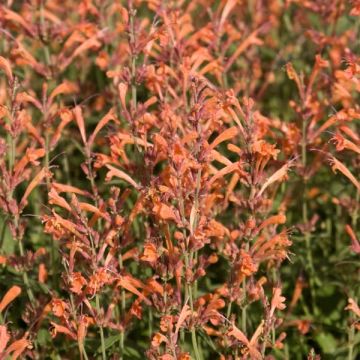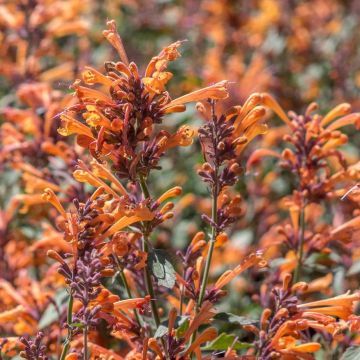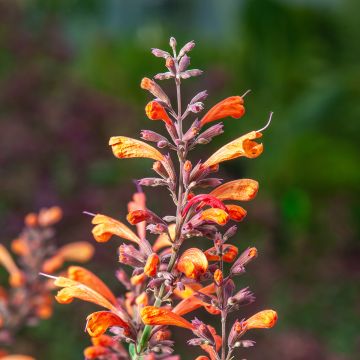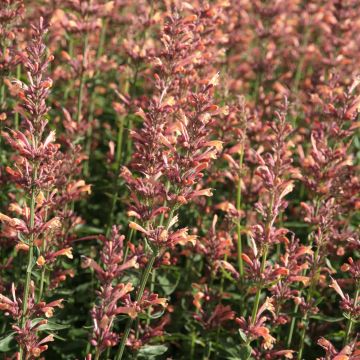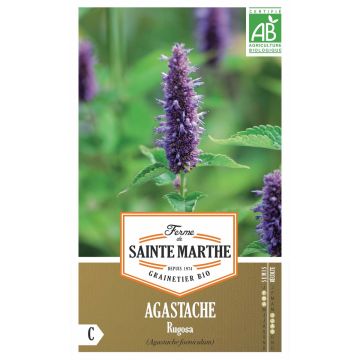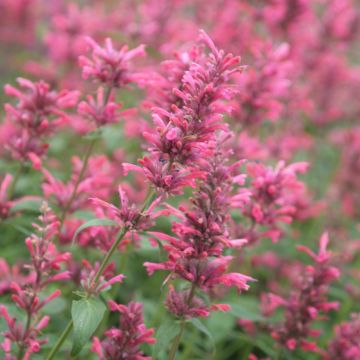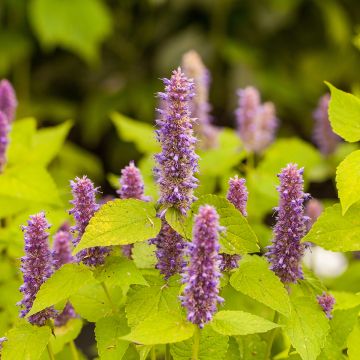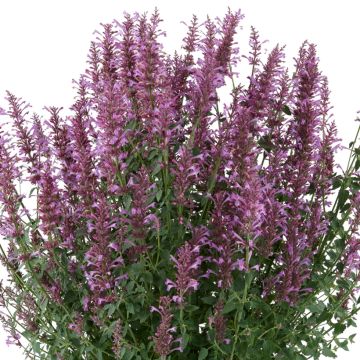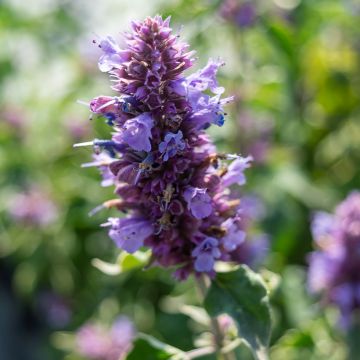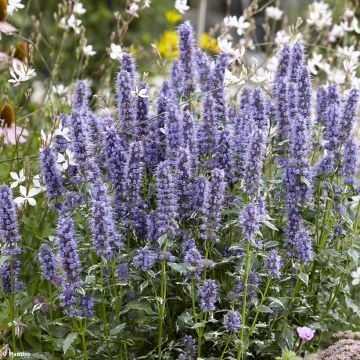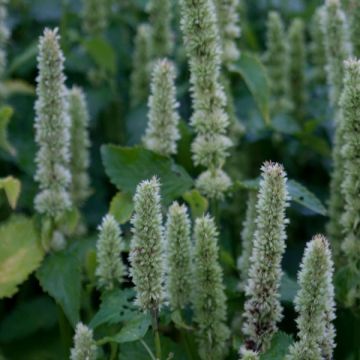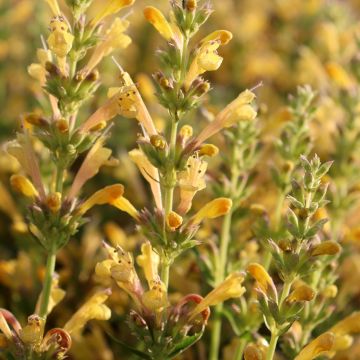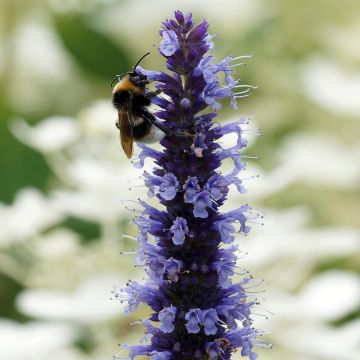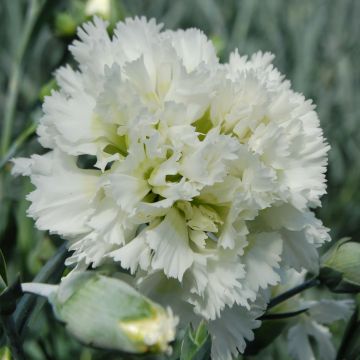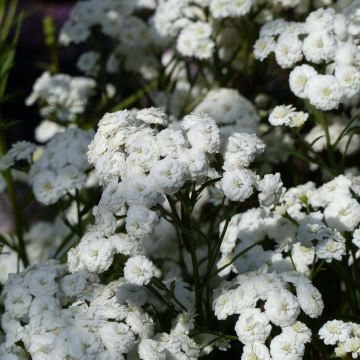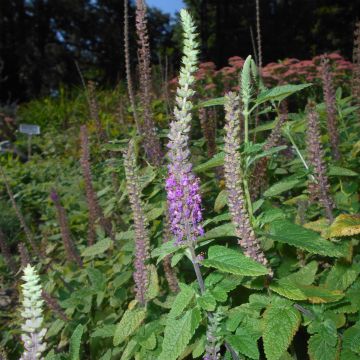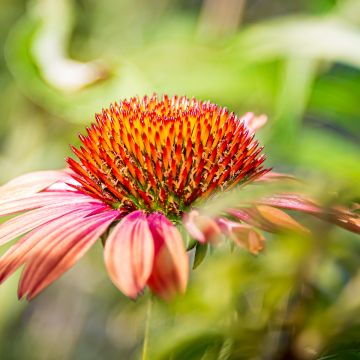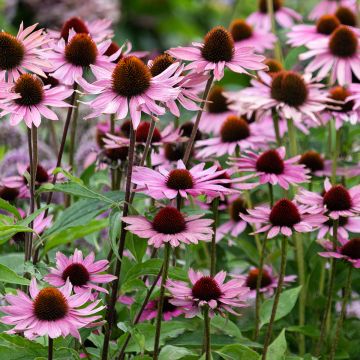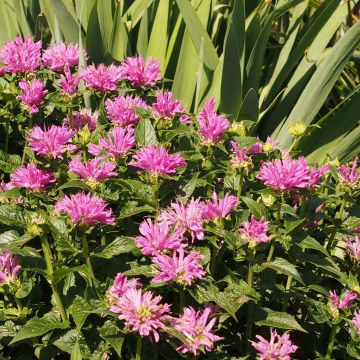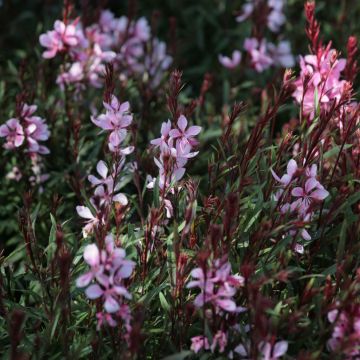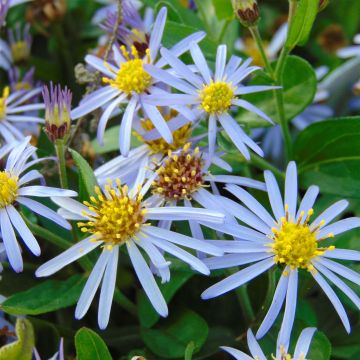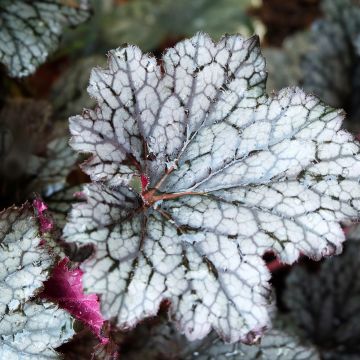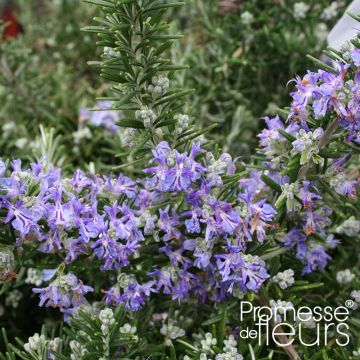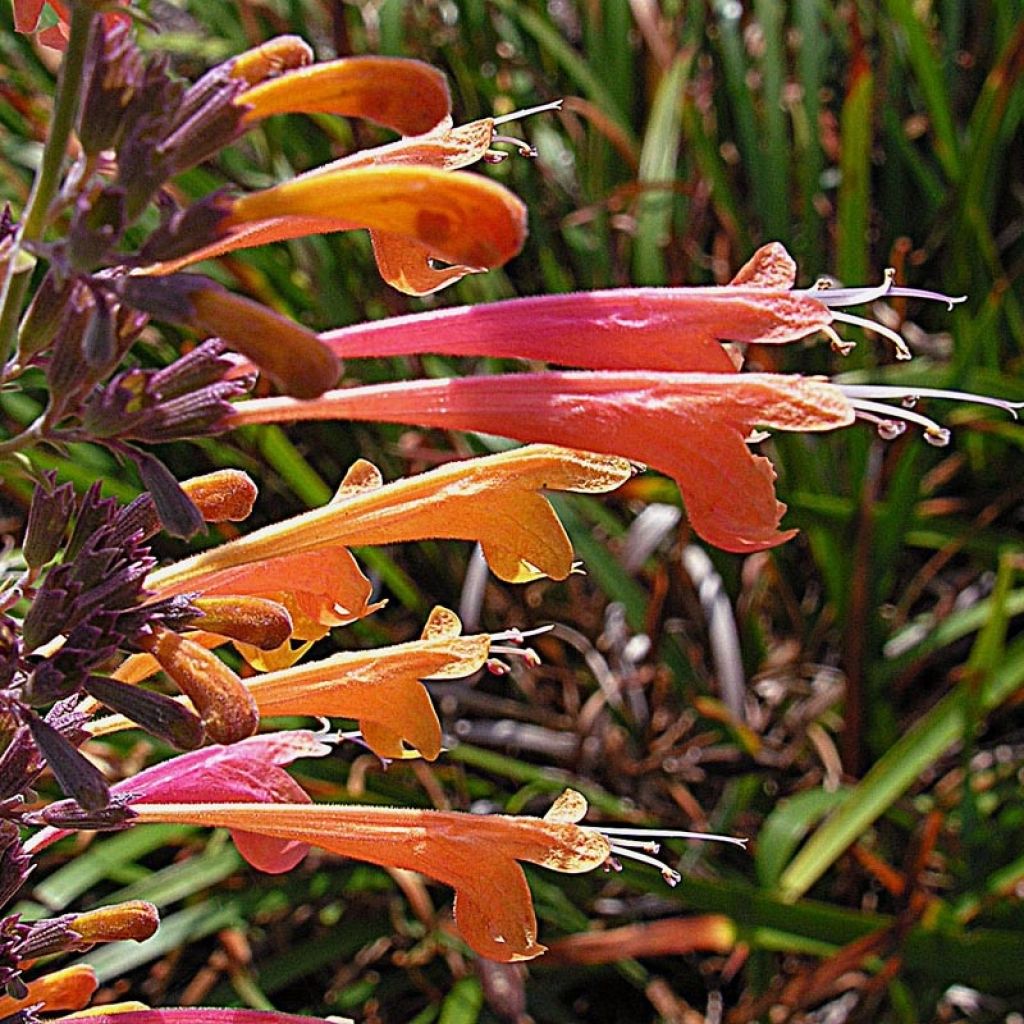

Agastache aurantiaca Tango
Agastache aurantiaca Tango
Agastache aurantiaca 'Tango'
Orange Hummingbird Mint, Orange Agastache, Sunset Hyssop, Mexican Hyssop
None of the 3 young plants have taken...
Alain, 21/09/2024
Why not try an alternative variety in stock?
View all →This plant carries a 12 months recovery warranty
More information
We guarantee the quality of our plants for a full growing cycle, and will replace at our expense any plant that fails to recover under normal climatic and planting conditions.
From €5.90 for pickup delivery and €6.90 for home delivery
Express home delivery from €8.90.
Does this plant fit my garden?
Set up your Plantfit profile →
Description
'Tango' Agastache aurantiaca is a superb compact and floriferous variety, with large coppery-orange flowers from June to October. Its aromatic, grey-green and strongly menthol-scented foliage fills the borders with fragrance. Give it a rich, well-drained soil that is not too dry in summer, in a sunny spot. Its life is short but it multiplies easily.
'Tango' Agastache grows spontaneously in northern Mexico and the southwestern United States. It is a species with large trumpet-shaped flowers, which are pollinated by hummingbirds in its natural habitat. It belongs to the Lamiaceae family, rich in plants that produce essential oils. These substances protect them from herbivorous animals and the sun's rays. The golden Agastache is no exception: its greyish green foliage, highly aromatic, releases a powerful menthol scent that delights the senses and repels pests! The flowers are also edible. Although not exceptional (-12°C (10.4°F) approximately, or even -15°C (5°F) in a well-drained soil and sheltered location), its hardiness is better than in other species.
The 'Tango' variety is a compact selection that will not exceed 45cm (18in) in height when in bloom, with the same width. Between June and October, it continuously produces a cloud of bright orange flowers, tinged with warm coppery tones, carried in dense, upright spikes above the leafy clump. Very floriferous and ramified, it also shows better resistance to humidity than others, especially if you live in a region with humid summers.
'Tango' Agastache appreciates full sun or light shade (otherwise its stems will wilt), and any good garden soil that is not too chalky. While its native range provides it with some resistance to hot climates and drought episodes, it will still be more beautiful and fuller if the summer is not too arid. However, it dislikes excessive water, so plant it in a well-drained soil that prevents moisture from accumulating at its base. Coarse sand and gravel can be useful in heavy soil. Finally, choose a warm and protected location, sheltered from cold winds and severe frosts. Agastaches are, in any case, perennials with a rather short lifespan: don't think you've done something wrong if your plant disappears after 3 to 5 years; that's its normal cycle. In principle, it should not be difficult for you to collect some self-sown seedlings in the vicinity. And, who knows, perhaps you will find among the offspring a plant with interesting characteristics! In a pot, make sure to water regularly, and it will generously reward you until autumn.
In a field of plants, it will form a beautiful colour combination with 'Gold Nugget' Sempervivum, which takes on warm colors in winter, 'Terracotta' Yarrow, Delosperma 'Wheels of Wonder Orange', or even 'Hot Papaya' Echinacea.
Report an error about the product description
Agastache aurantiaca Tango in pictures
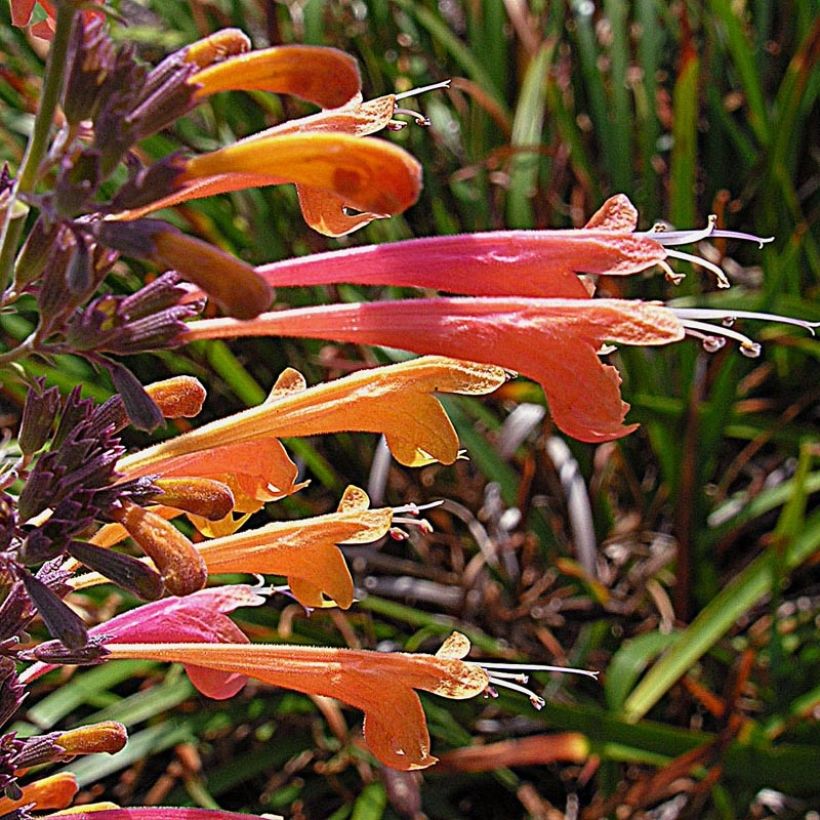

Flowering
Foliage
Plant habit
Botanical data
Agastache
aurantiaca
'Tango'
Lamiaceae
Orange Hummingbird Mint, Orange Agastache, Sunset Hyssop, Mexican Hyssop
Cultivar or hybrid
Other Agastache
Planting and care
Agastache 'Tango' is a plant that particularly fears continuously wet soils in winter, as they harm its hardiness and can make it disappear. In heavy soil, you can use pure sand to plant the stump without adding any soil. This plant requires a sunny and sheltered exposure from severe frosts. During very harsh winters, cover the stumps with straw or dead leaves to form a thick mulch. The soil that welcomes it must be fertile, loose, well-drained, but rather moist, especially during the flowering period. The plant can withstand periods of temporary drought, which nevertheless harm its flowering.
Planting period
Intended location
Care
-
, onOrder confirmed
Reply from on Promesse de fleurs
Summer flowering perennials
Haven't found what you were looking for?
Hardiness is the lowest winter temperature a plant can endure without suffering serious damage or even dying. However, hardiness is affected by location (a sheltered area, such as a patio), protection (winter cover) and soil type (hardiness is improved by well-drained soil).

Photo Sharing Terms & Conditions
In order to encourage gardeners to interact and share their experiences, Promesse de fleurs offers various media enabling content to be uploaded onto its Site - in particular via the ‘Photo sharing’ module.
The User agrees to refrain from:
- Posting any content that is illegal, prejudicial, insulting, racist, inciteful to hatred, revisionist, contrary to public decency, that infringes on privacy or on the privacy rights of third parties, in particular the publicity rights of persons and goods, intellectual property rights, or the right to privacy.
- Submitting content on behalf of a third party;
- Impersonate the identity of a third party and/or publish any personal information about a third party;
In general, the User undertakes to refrain from any unethical behaviour.
All Content (in particular text, comments, files, images, photos, videos, creative works, etc.), which may be subject to property or intellectual property rights, image or other private rights, shall remain the property of the User, subject to the limited rights granted by the terms of the licence granted by Promesse de fleurs as stated below. Users are at liberty to publish or not to publish such Content on the Site, notably via the ‘Photo Sharing’ facility, and accept that this Content shall be made public and freely accessible, notably on the Internet.
Users further acknowledge, undertake to have ,and guarantee that they hold all necessary rights and permissions to publish such material on the Site, in particular with regard to the legislation in force pertaining to any privacy, property, intellectual property, image, or contractual rights, or rights of any other nature. By publishing such Content on the Site, Users acknowledge accepting full liability as publishers of the Content within the meaning of the law, and grant Promesse de fleurs, free of charge, an inclusive, worldwide licence for the said Content for the entire duration of its publication, including all reproduction, representation, up/downloading, displaying, performing, transmission, and storage rights.
Users also grant permission for their name to be linked to the Content and accept that this link may not always be made available.
By engaging in posting material, Users consent to their Content becoming automatically accessible on the Internet, in particular on other sites and/or blogs and/or web pages of the Promesse de fleurs site, including in particular social pages and the Promesse de fleurs catalogue.
Users may secure the removal of entrusted content free of charge by issuing a simple request via our contact form.
The flowering period indicated on our website applies to countries and regions located in USDA zone 8 (France, the United Kingdom, Ireland, the Netherlands, etc.)
It will vary according to where you live:
- In zones 9 to 10 (Italy, Spain, Greece, etc.), flowering will occur about 2 to 4 weeks earlier.
- In zones 6 to 7 (Germany, Poland, Slovenia, and lower mountainous regions), flowering will be delayed by 2 to 3 weeks.
- In zone 5 (Central Europe, Scandinavia), blooming will be delayed by 3 to 5 weeks.
In temperate climates, pruning of spring-flowering shrubs (forsythia, spireas, etc.) should be done just after flowering.
Pruning of summer-flowering shrubs (Indian Lilac, Perovskia, etc.) can be done in winter or spring.
In cold regions as well as with frost-sensitive plants, avoid pruning too early when severe frosts may still occur.
The planting period indicated on our website applies to countries and regions located in USDA zone 8 (France, United Kingdom, Ireland, Netherlands).
It will vary according to where you live:
- In Mediterranean zones (Marseille, Madrid, Milan, etc.), autumn and winter are the best planting periods.
- In continental zones (Strasbourg, Munich, Vienna, etc.), delay planting by 2 to 3 weeks in spring and bring it forward by 2 to 4 weeks in autumn.
- In mountainous regions (the Alps, Pyrenees, Carpathians, etc.), it is best to plant in late spring (May-June) or late summer (August-September).
The harvesting period indicated on our website applies to countries and regions in USDA zone 8 (France, England, Ireland, the Netherlands).
In colder areas (Scandinavia, Poland, Austria...) fruit and vegetable harvests are likely to be delayed by 3-4 weeks.
In warmer areas (Italy, Spain, Greece, etc.), harvesting will probably take place earlier, depending on weather conditions.
The sowing periods indicated on our website apply to countries and regions within USDA Zone 8 (France, UK, Ireland, Netherlands).
In colder areas (Scandinavia, Poland, Austria...), delay any outdoor sowing by 3-4 weeks, or sow under glass.
In warmer climes (Italy, Spain, Greece, etc.), bring outdoor sowing forward by a few weeks.

































